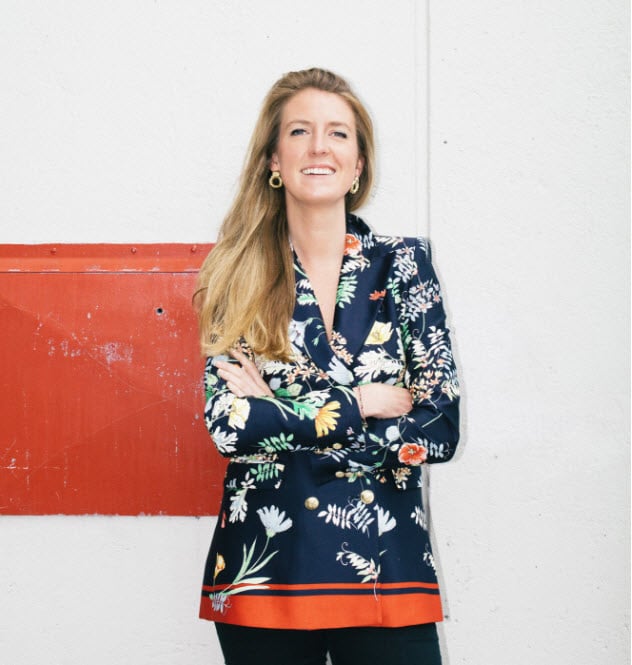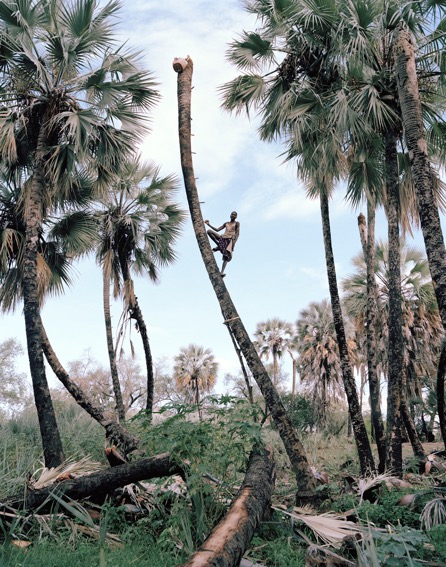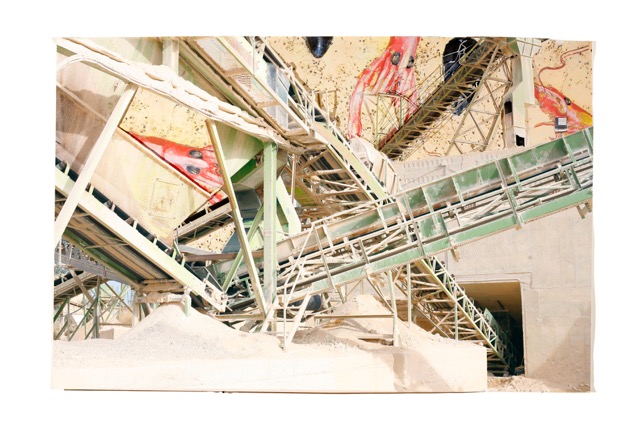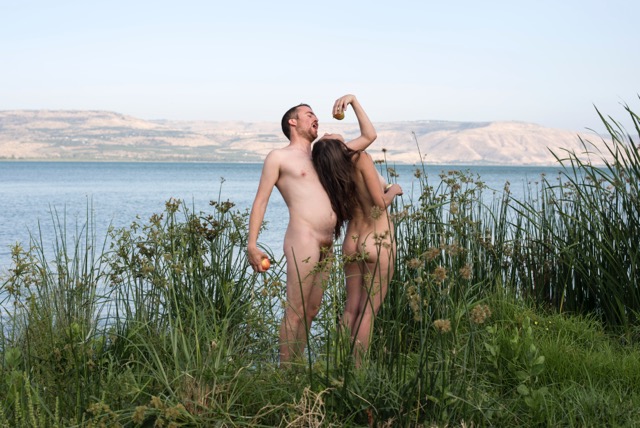Art Fairs
artnet Asks: Emilia van Lynden of Unseen Amsterdam
She gives us a preview of what's to come from photography's biggest annual fair.

She gives us a preview of what's to come from photography's biggest annual fair.

Artnet Galleries Team

Though travelers might associate Amsterdam with the great art of the past, it has increasingly established itself as a leading destination for contemporary photography—and the annual Unseen Amsterdam has played a major role in establishing this new reputation. Returning for its sixth year to Westergasfabriek, the fair offers a platform for everything new in photography, from emerging artists to experimental new publishers, star-studded panel discussions to citywide exhibitions.
Here, the artistic director of the fair Emilia van Lynden gives us a preview of what we can expect at this year’s edition of Unseen Amsterdam, opening September 22 and running through September 24.
What can we expect from this year’s Unseen?
The fair is back, stronger than ever, with 53 international galleries with exhibitors from Lebanon and Mexico joining for the first time. Another highlight for this year is that we have over 80 premiering artists—artists showing work that has never been seen before at any gallery, art fair, or within any institution. This is the highest number of premieres we have ever shown, so I’m thrilled to see these works for the very first time at the fair. These artists include Mohau Modisakeng, Vasantha Yogananthan, Mayumi Hosokura, and Ruth van Beek.
In addition, the Book Market will yet again return with 60 independent international publishers, as will our speakers program, the Living Room. This year, the Living Room is co-curated by the Centre for Creative Photography (Tucson) and the Barbican (London), and we can expect to hear leading artists, such as Nadav Kander, Edmund Clarke, Liz Nielsen, and Broomberg & Chanarin, talk about their practices. We will have a variety of onsite artist-run projects, such as Analogue (back) in Fashion presented by the fashion brand Zoe Karssen, as well as a presentation created by 12 third-year students from the Royal Academy of Arts in The Hague.
Our leading exhibition Photo Pleasure Palace is curated by the artists Erik Kessels and Thomas Mailaender, and will be a weird and wonderful interactive photography fun fair. And then we have our Talent Development Programmes such as the ING Unseen Talent Award and other leading events and exhibitions that will also take place during the jam-packed four days.

Kyle Weeks, Mevetwapi Joya, Kunene Region, Namibia, from the series Palm Wine Collectors (2015). Courtesy of Kyle Weeks Red Hook Labs.
Can you reveal any specific highlights being shown this year?
A new program element that I am hugely excited about this year is Unseen CO-OP, our newest space dedicated to artist collectives. Unseen CO-OP truly puts the artists first and has been set up to stimulate collaborations between artists, as well as approaching art commerce in novel and unconventional ways to create more sustainable careers for collectives. Together CO-OP’s curator Lars Willumeit and Unseen have selected 13 international collectives to launch the first edition of Unseen CO-OP, including collectives from Bangladesh, Colombia, and Nepal.
Lastly, 12 students from the Royal Academy of Art in The Hague have been selected to create an exhibition of the work from their second year at the academy. The work on display highlights the different materials and media that these artists are currently working with, as well as the complex themes that they are tackling at the beginning of their careers. The exhibition called Let me tell you about… is a fantastic opportunity for such young artists to showcase their work and to connect with major players in the industry.
How has the fair changed since it first began?
The fair was launched in 2012, as a Fair with a Festival Flair, as we wanted to show that a fair could be welcoming and inviting to a broad audience and not only to the fortunate few. Photography is a hugely accessible medium and one where prices are still—on the whole—reasonably affordable. We therefore wanted to incorporate this festival flair to also include different projects and outdoor installations. In 2015, we launched Unseen Photo Festival alongside Unseen Photo Fair, which took place in a specific neighborhood in Amsterdam. We curated a set amount of exhibitions and collaborated with local partners away from the fairground and within the festival neighborhood.

Ricardo Cases, Untitled, from the series Estudio Elemental Levante (2017). Courtesy of Ricardo Cases Espace JB.
This year, we decided to rebrand and to become a year-round platform for contemporary photography with our main event taking place in September, Unseen Amsterdam. We wanted to concentrate the exhibitions that we program close to the Westergasfabriek, where the fair is, in this way making it easier to comprehend for our audience, roughly a third of which is international. Unseen Amsterdam has a large amount of different program elements, such as the Fair, the Book Market, CO-OP, the Living Room, the Onsite Projects, and three exhibitions. Lastly we also have a City Programme which highlights a variety of exhibitions in renowned institutions and unknown locations in the city of Amsterdam. Everything that Unseen Amsterdam curates or coordinates is therefore now situated in the Westerpark but we also work with an array of partners all over the city within our City Programme.
Unseen Amsterdam is therefore a multifaceted event, but the fair and its exhibitors are still the leading program element. The fair in and of itself has not hugely changed, it is the core of what we do and our concept remains the same. The fair aims to show the newest high-quality works of emerging and established artists working with the medium of photography. The change that we have seen within the fair is the demographics—we have seen a substantial increase of international visitors attending the fair as well as new international galleries exhibiting within Unseen Amsterdam, this year, that includes new galleries from Lebanon and Mexico.
How are these changes related to the ever-changing art market, and how do you believe will the fair develop further?
I think it is essential to create an event that is as inclusive as possible, that not only focuses on artists who have gallery representation but also talented artists who are trying to enter the art market. The art market is of course hugely competitive, so I think that commercial players, such as art fairs, should look at putting the artist first and making their careers more sustainable. It is our responsibility to work on giving artists as much visibility as possible and this is something that Unseen is constantly working on. We definitely are looking at how we can increase the visibility of our artists throughout the year both on and offline. Additionally, we have to keep on informing our audience on a continuous basis. Photography is constantly changing and it is our duty to highlight those changes to our audience and make sure that they know what artists are working on.
You can expect to see much more from Unseen both on and offline in the years to come.

Tanya Habjouqa, Adam and Eve, from the series Sacred Space Oddity, The Un´ÇóHoly Land (2016). Courtesy of Tanya Habjouqa´ÇóILEX Gallery.
As artistic director of Unseen, what are your hopes for the city, and how do you plan to contribute to Amsterdam’s cultural history?
My hope is that people start to see that we are truly a contemporary art capital. There are so many phenomenal institutions and galleries within Amsterdam. Even though we are a relatively small capital city, there is so much going on in regards to contemporary art. When people think of Amsterdam, they think of the great masters such as Rembrandt, Vermeer, and Jan Steen, but I hope that over the years this perception has slightly changed. Yes, come to Amsterdam to see the great masters of the 17th century, but also delve into what contemporary artists are producing in the city as you will be mesmerized by the diversity and talent of so many of these makers.
In regards to Unseen’s role, it is an extension of this. Amsterdam is not yet renowned as a photography capital, but this is also changing. Unseen Amsterdam will show its international visitors that there is so much to see and do in regards to photography. We have two leading photography museums, Foam and Huis Marseilles, in Amsterdam, and we have an array of contemporary fine art galleries that represent phenomenal artists, such as the established Michael Wolf and Miles Aldridge but also emerging talents such as Laurence Aëgerter and Nico Krijno. My hope is that more people will come and visit Amsterdam to discover a plethora of talented artists working in the city and what better time to come than during Unseen Amsterdam when all these galleries, institutions and project spaces are programming photography.